for designer
March 18, 2009
amanda levete architects: 'CORIAN® super-surfaces' at milan design week
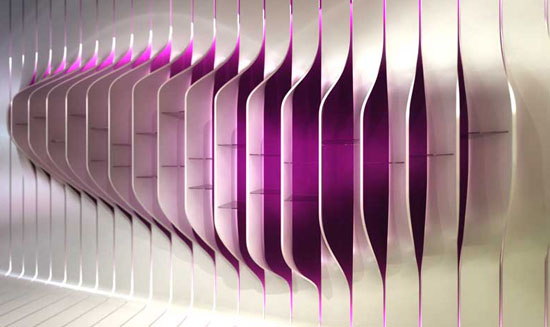
'Corian® super-surfaces' feature wall by amanda levete architects
image courtesy DuPont™ Corian®
'Corian® super-surfaces' is the name of the exhibition that DuPont™ Corian®
and amanda levete architects (ALA) will create for the upcoming
milan design week in april 2009.
what will be displayed is the lounge environment re-defined: a conceptual
interpretation of the lounge as a dynamic space of transition between neutral
and active states, 'Corian® super-surfaces' is a frozen moment within a dynamic
sequence of transformations which morph DuPont™ Corian® solid surfaces into
a fluid and elastic collection of integrated kitchen, bathroom and flooring concepts
highlighted by a feature wall conceived by ALA and materialised with
DuPont™ Corian®.
carefully crafted by the design vision of ALA, this sculptural interpretation of
the lounge environment showcases the amazing material performance of DuPont™
Corian® and highlights its inherent ability to modify perceptions of space and form.
through a combination of advanced digital design technologies, innovative fabrication
techniques, and fascinating lighting effects, ALA will reveal the 'super-surfaces' nature
of DuPont™ Corian®.
a publication will be launched soon detailing 'Corian® super-surfaces'.
'Corian® super-surfaces' feature wall by amanda levete architects
image courtesy DuPont™ Corian®
'Corian® super-surfaces'
image courtesy DuPont™ Corian®
'Corian® super-surfaces'
image courtesy DuPont™ Corian®
March 16, 2009
PAPER FOLD
Paperfold is a lamp series inspired by colorful paper and beautiful collars. The different forms have been developed through playing with paper.



March 14, 2009
andres jaque architects: tupper home
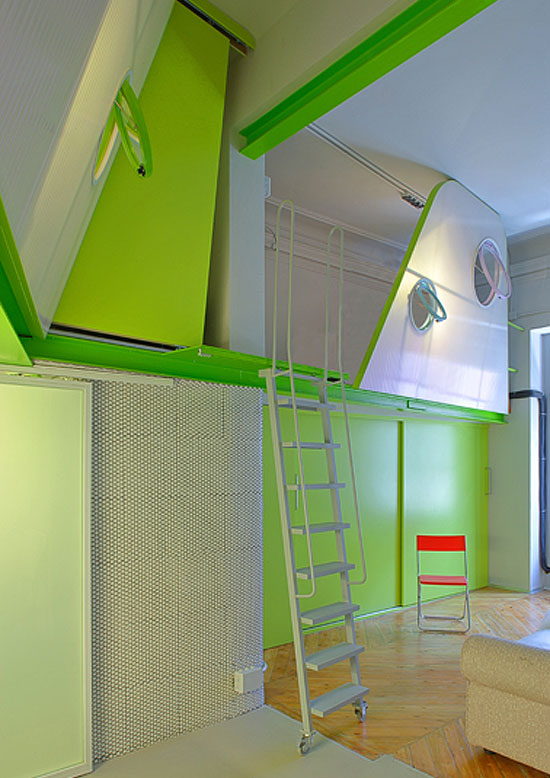
'tupper home' by andrés jaque architects
image courtesy andrés jaque architects
spanish firm andrés jaque architects have created the 'tupper home'. the design is
nominated for the premio mies van der rohe award and has been selected as
a finalist in the x spanish biennale of architecture and urbanism to be held in july 2009.
tupper home is the first product offered by tupper shop, a catalogue of architectural
merchandise marketed by the andrés jaque architects office, an initial prototype of
which has been built in madrid. proposed as an alternative to the official line of urban
planning, it is based on the experience of demonstration marketing – tupperware, avon,
herbalife, thermomix- which gained popularity following world war II and has proven
effective as what could be called a pop distribution network of fresh behavior patterns.
the tupper home is an architectural and financial answer to three public concerns
that highlight the crisis in the development model underlying spain´s residential
fabric in the euro era, and for which detailed home design is compulsory waypoint.

'tupper home' various components
image courtesy andrés jaque architects

'tupper home' bedroom area
image courtesy andrés jaque architects

'tupper home' various components
image courtesy andrés jaque architects

'tupper home'
image courtesy andrés jaque architects

'tupper home'
image courtesy andrés jaque architects
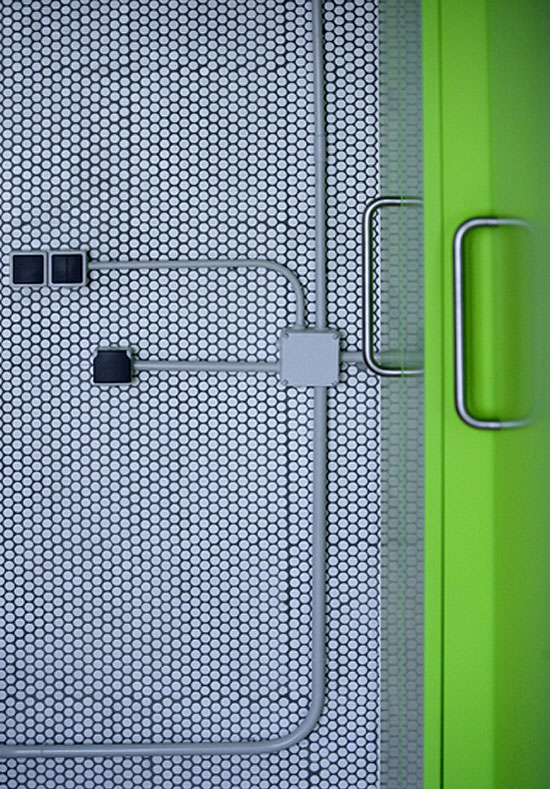
'tupper home'
image courtesy andrés jaque architects

floor plan of 'tupper home'
image courtesy andrés jaque architects

floor plan of 'tupper home'
image courtesy andrés jaque architects

elevation plan of 'tupper home'
image courtesy andrés jaque architects

elevation plan of 'tupper home'
image courtesy andrés jaque architects

where different accessories can be placed in 'tupper home'
image courtesy andrés jaque architects
March 9, 2009
Pizza Kobra !! It's amazing!

If someone offered you a Pizza Kobra, you’d probably wonder whether to salivate or run. As it turns out, the PizzaKobra is neither food nor reptile: it’s a very cool lamp that bends to your will.

The name comes from the fact that the lamp can look like a pizza, a cobra, and a score of other shapes. It’s a coil of soft metal that you can bend and manipulate to illuminate your space in unique ways. When it’s not lighting up your desk, it doubles as a beautiful and personal piece of art that is shaped by you.

This innovative lighting solution won Best of the Best in the 2008 Red Dot design awards, and for good reason. The design is approachable and fun, yet it looks pretty high-tech and awesome. You can’t help but play with it and move it around.

It appears that the PizzaKobra is not available in the US, but if you live in one of the 64 other countries where it is sold you may be able to mess around with this gadget in your own home. Visit the distributor’s website to see if there is a seller in your country.
March 3, 2009
sou fujimoto: 'lexus l- finesse- crystallised wind' at milan design week 09
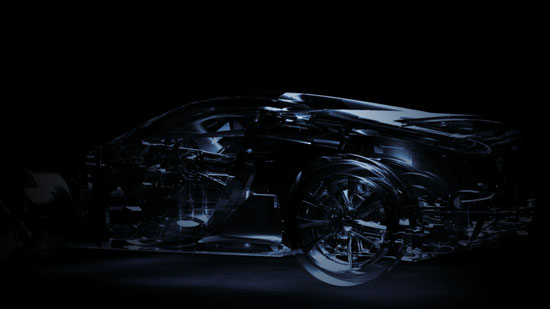
'lexus l- finesse- crystallised wind' art installation by sou fujimoto for lexus
japanese architect sou fujimoto was invited by lexus to design their 2009 art exhibition
for this year's milan design week.
'lexus l- finesse- crystallised wind' will re-interpret the ambivalence of the lexus design
philosophy ‘L-finesse’ through a dynamic installation that combines unity in space,
sound and lighting.
'crystallised wind is the result of a conceptual interpretation of the underlying principles
of L finesse design', explains sou fujimoto. 'the term wind addresses not only the flow of wind,
but also symbolises a flow or current in a greater sense. it is a new horizon where the natural
and the artificial coexist in space. I wanted to find a way to give form to that which is formless:
to take the flow of air and the passing of time and to represent them in such a way as to explain
the essence of the duality of L-finesse. the result is an art form that represents movement yet
stillness, and the flow of time in a timeless environment.'
the lexus space will display an acrylic art piece based on the full-size concept car model,
the lexus super sports concept car, the LF-A as well as a specially designed piece of
furniture constructed from acrylic.
the exhibition will take place in milan’s museo della permanente art gallery, from april
22nd to 26th. here is a preview of the installation.
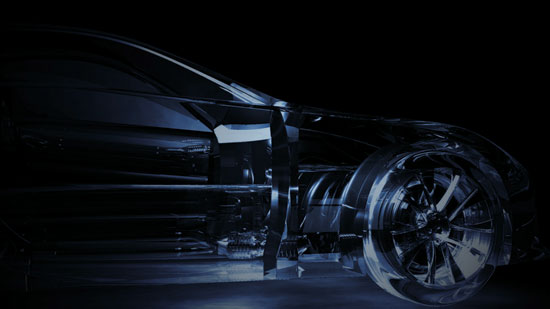
'lexus l- finesse- crystallised wind'
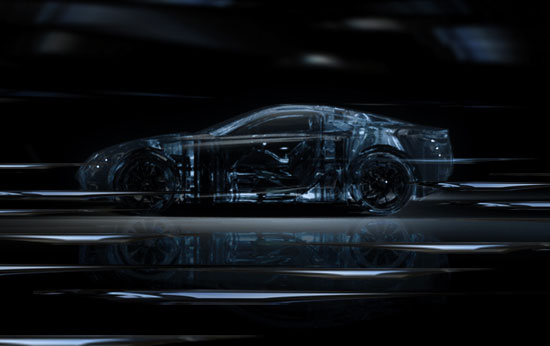
'lexus l- finesse- crystallised wind'
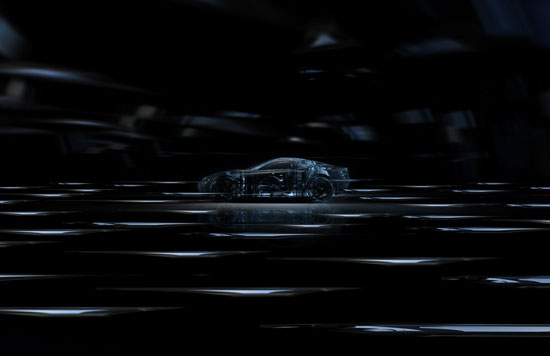
'lexus l- finesse- crystallised wind'
March 1, 2009
naoto fukasawa: hiroshima series for maruni collection

hiroshima lounge chair by naoto fuksawa
photo yoneo kawabe © maruni wood industry inc
designer naoto fukasawa has designed a new series of furniture for
japanese company maruni collection part of their hiroshima brand.
the range includes a lounge chair, a side table, and three variations of sofas,
constructed with beech and oak wood. the products have just been released.
here is a sneak preview.
hiroshima lounge chair by naoto fuksawa
photo yoneo kawabe © maruni wood industry inc
hiroshima single seat sofa by naoto fuksawa
photo yoneo kawabe © maruni wood industry inc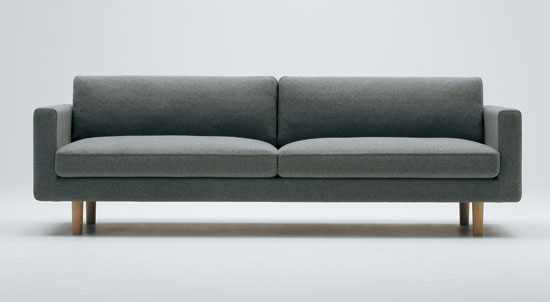
hiroshima three seat sofa by naoto fuksawa
photo yoneo kawabe © maruni wood industry inc
hiroshima three seat sofa by naoto fuksawa
photo yoneo kawabe © maruni wood industry inc

February 18, 2009
Calvin Klein MP3 Speaker Bottle: The Scent of a Gimmick
 As part of their "We are One" campaign beginning next month, Calvin Klein will be offering bottles of CK One & CK Be with a removable MP3 speaker in the base.
As part of their "We are One" campaign beginning next month, Calvin Klein will be offering bottles of CK One & CK Be with a removable MP3 speaker in the base.
Apparently, the speaker tie-in reflects the notion that music is a universal language, so it has a thin-marketing relationship to the "unity" theme. But my question is—what about math? Is math not the true language of the universe? I guess putting a calculator in the base wouldn't be hot enough. [Selectism via The Design Blog]
February 15, 2009
Kor One Water Vessel
The Kor One Hydration Vessel elevates the humble water bottle to new aesthetic and functional levels. Forget Voss, Smart Water, and Jeff.
Face it, we need privatized bottled water like we need more internal combustion engines on our freeways. Getting people off the bottled water habit is no small feat though. City dwellers in particular, relish the convenience of a deli-bought bottle, preferring to quench their thirst on the fly rather than plan ahead by toting something reusable.
The answer might lie in making the bottle into an object of desire by co-opting some of the industry's very own branding schemes. Enter Kor, a new company dedicated to creating sustainable personal hydration solutions.
What started as one man's attempt to find a decent reusable water bottle has blossomed into one of the sexiest industrial designs of the year. Taking a few visual cues from bottled water packaging (click images for detail), Kor ups the ante with a handful of intelligent design choices. Foremost, the vessel (which starts shipping next month and retails for $30) features a hinged snap-cap that allows one to open and drink with a single hand. Unlike typical Sigg bottles (our former vessel of choice), the Kor One has a wide mouth that can accommodate ice cubes and deliver more water on demand. Lastly, consider the bottle's ovular shape. When viewed from the front, it reminds of an old thermos; only from the side or the top can you see that the vessel has been pinched to provide an easier hand grip. Brilliant.

Discerning partnerships with Eastman Innovation Lab, RKS (for the ingenious lid) and Nypro (who delivered a mould that allowed for a lens-like bottom), have resulted in a product befitting the highest annual design award. According to Kor's new blog, this is just the first in a series of "Water ReDesigned" solutions. We can't wait to see what comes next.
via Core77.
'tate otama' freestanding ladle by mikiya kobayashi
Come Up To My Room '09: Eric Mathew & Andrew Ooi

Eric Mathew and Andrew Ooi's origami light fixtures are made of printed Japanese paper. The print is of wood grain and though the lamps are made of paper they are surprisingly robust, as wood would be. My guide at CUTMR, show curator Jeremy Vandermeij, had this to say about Andrew and Eric; "[they] share a common interest in the elegant versatility of paper as a design material. Their work utilizes paper as a valuable commodity, in contrast to its popular public conception as a ubiquitous disposable resource. Drawing inspiration from traditional Japanese uses of paper in the production of items of everyday use, their work has evolved to include lighting, furniture, and ornament."
February 13, 2009
Wooden Gadget by COOL HUNTING
As technology continues on its upward trajectory, designers occasionally grow nostalgic for simpler forms. Consumers also want the basic aesthetics of yesterday, without sacrificing the technological advances of today. One way to get the best of both worlds is wood-based electronics. Whether for the eco-minded, who prefer it to non-biodegradable plastic, or for pure classicists who are charmed by its timelessness, the wooden form is at once visually striking and practical. Here are some of the better examples we've come across recently.


Magno Wooden Radio
The Magno radio is the brainchild of Indonesian entrepreneur Singgih Kartono. Handmade by local carpenters from sustainably-harvested wood, it comes in two sizes (pictured above). In addition to AM and FM frequencies, Kartono satisfies the true retro-philes with two bands of shortwave radio. He also bows to modern conventions by including MP3 compatibility. It's currently available from Areaware, with the small version costing $200 and the larger $250.

Maple Phone
The Maple Phone was designed by Hyun Jin Yoon and Eun Hak Lee, who won the silver at this year's International Design Excellence Awards. It's comprised of two slender pieces of maple that function as a slider, revealing the LCD display stored inside. A sensor on the back turns the block of wood into a fully functional, touch-sensitive phone with MP3 compatibility and a digital camera. Though still in prototype form, the creators expect to manufacture the phone at an affordable rate so that it's available on a large scale. Keep an eye on the designers' blog for production updates.
Swedx
Since 2002, this Swedish company has been producing electronics embedded in polished wood. They claim to bring a "more human" feeling by using warm, natural materials on their computer monitors, television screens and accessories. But despite the unconventional material, they didn't skimp on technology. Their engineers designed one of the world's thinnest TFT-LCD monitors and didn't sacrifice on usability. Swedx products cost are close to the industry standard, and you can buy them from their website.


David Burel Plywood Headphones
These distinctive headphones are as elegant as they are simplistic. Dissatisfied with wood used as a marketing device for environmentalists, David Burel made sure his phones made wood an integral feature of the design. The "wood arch" is made from Finnish birch plywood and uses the same molding technique employed by furniture and skateboard designers. The resulting arch has a width of 1.2mm, so it's lightweight and flexible, while providing the precise, resonant sound that only wood can produce. They're being launched under the title The Perfect Unison, where you can preorder one of 100 units currently in production. Since they're made from one continuous piece, you'll have to measure your head for proper sizing. While it ensures a perfect fit, it's also a built-in excuse to reject your friends' request borrow them.


Wooden LED Clock
This clever timepiece looks like an ordinary block of wood when it's deactivated. Once operational, thought, an interior light lets the numbers glow from behind its surface. It can be run like a normal clock with a constant display, with the digits flashing every 2.5 seconds or in "slide mode," where the numbers scroll one digit at a time every minute. It doesn't have an alarm or any advanced features, but what it lacks in function, it makes up for with eye-catching fashion. You can buy one for $150 at ThinkGeek.
Also on Cool Hunting: Suissa: Enlighten
Plastic Logic Reader

Still one year out of consumer reach, the Plastic Logic reader is already being touted by some sources as the Kindle killer. At this week's Tools of Change for Publishing Conference in New York, I had a chance to see the reader prototype in action and get my hands on one, albeit briefly.
With a form factor equivalent to that of a legal-size pad of paper, though coming in at half the thickness and weighing under 16 ounces, it's easy to see the reader's instant appeal. Compatibility with document formats like Word, Excel, PowerPoint and PDFs, in addition to newspapers, periodicals and books, means that users will no longer need to stuff carry-ons or briefcases full of papers when traveling. The reader has the capacity to store thousands of documents, all of which can be synced wirelessly or with wired access. Publishing partners already include fictionwise, the Financial Times, Ingram Digital and USA Today.

So how about the image quality? The reader utilizes an E Ink active matrix display, initially produced with a grayscale screen that adequately replicates the effect of reading newsprint (plans for both a flexible reader and color screen are in the works). Unlike typical glass silicon displays, the flexible plastic substrates used in the reader allow the device to be both thinner, lighter and rugged. These features, coupled with the ability to see the reader in broad daylight, makes for a strong case indeed.
The touch-screen interface uses simple gestural commands similar to those on Apple devices, allowing for toggling between pages, zooming in and out and bringing up the keyboard for annotations. A simple home button in the upper left corner brings users back to the main page. Check out a demonstration at the Consumer Electronics Show in the AP video below.
All in all, I was more than impressed with Plastic Logic's reader. Holding the device in my hands felt little different than holding a sturdy copy of The New Yorker. Although the device is somewhat finalized, a few contentious points remain with regard to the physical design.
As we all learned from generations of iPods, rounded corners are nice, but rounded edges are even nicer. The reader could benefit with a miniscule tweak of this detail while also changing the backside to a more tactile material. Additionally, the color palette chosen for the prototype is highly reminiscent of the beige CPU towers that took us decades to do away with—we still tend to judge books and magazines by their covers. While Plastic Logic may be alluding to the color of paper or newsprint, the device is devoid of the sensual appeal that Apple brought to its iPod line-up. Lastly, the company may want to consider untethering the device to its name. Unless they can team up with some real branding gurus, we're guessing a name like Plastic Logic will do little to inspire consumer lust.
MoMA Design Store: Destination Seoul


We were lucky enough to attend the opening for the MoMA Design Store's new product collection, Destination Seoul, which highlights designers and products from South Korea. Buyers selected young, emerging Korean designers and their creations across a range of categories for a diverse curatorial of goods usually only found on the peninsula.
As part of the MoMA Design Store's destination series and sponsored by HyundaiCard, the Korea Institute of Design Promotion (KIDP) and , it's the first Korean design collection of its kind in the States, further cementing Korea's place in the international contemporary creative scene. Products range from spoon reimagined as a bottle opener to mini replicas of Bibimbap, but our favorites from the collection have to be the Sandwich Sponge ($10), Wooden Block Rattle Set ($18) and the Cloud Memo Pad ($8).

Designed by Jaewon Yang and Hyung Jeong Lee, the Sandwich Sponge is an absurd take on the cleaning utensil, playing on the similarity between breads and sponges, as well as the idea of cleaning food with food. The Wooden Block Rattle Set designed by Jae Keun Song is a clever combination of two childhood toys. Made from natural wood finished with linseed oil, each wooden block features a different face and makes a distinctive sounds. And Ami's favorite, the Cloud Memo Pad, designed by Mi-Jung Ju, features Korea's traditional color stripes in the form of a cloud shape. The pad consists of an array of lined and unlined paper of different colors.
All the Destination Seoul products are exclusive to MoMA and available for a limited time online.



